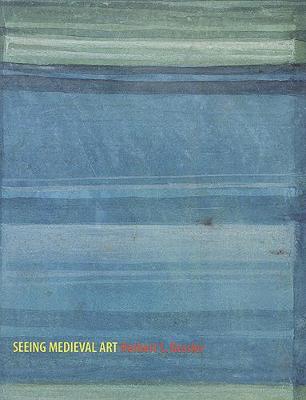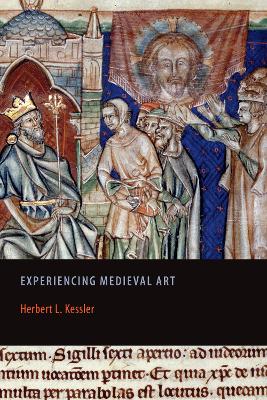Rethinking the Middle Ages
2 total works
A Note About the Cover: "Evangeliary of St. Andreas of Cologne." (AE 679, fol. 126v, Hessisches Landesmuseum Darmstadt. Reprinted by permission). This eleventh-century manuscript demonstrates a trend of the High Middle Ages in which transcendental contemplation was initiated by abstract means. Here, thin washes of celestial colors elevate the animal flesh itself, the vellum on which words and pictures are elsewhere inscribed, to guide the viewer's thoughts from the physical world toward (though not all the way to) the invisible God. How did medieval people see art? How was it made, paid for, and used? Why was it necessary to social activities including teaching, civic processions, and missionary work, as well as to architecture and books? With 12 color plates and 54 plates in all, Seeing Medieval Art looks at art's functions and traces many crucial developments including the development of secular art and historical narrative, and the emergence of individual portraiture.
This is the first title in a series called Rethinking the Middle Ages, which is committed to re-examining the Middle Ages, its themes, institutions, people, and events with short studies that will provoke discussion among students and medievalists, and invite them to think about the middle ages in new and unusual ways. The series editor, Paul Edward Dutton, invites suggestions and submissions.
This is the first title in a series called Rethinking the Middle Ages, which is committed to re-examining the Middle Ages, its themes, institutions, people, and events with short studies that will provoke discussion among students and medievalists, and invite them to think about the middle ages in new and unusual ways. The series editor, Paul Edward Dutton, invites suggestions and submissions.
Across the nine thematic chapters of Experiencing Medieval Art, renowned art historian Herbert L. Kessler considers functional objects as well as paintings and sculptures; the circumstances, processes, and materials of production; the conflictual relationship between art objects and notions of an ineffable deity; the context surrounding medieval art; and questions of apprehension, aesthetics, and modern presentation. He also introduces the exciting discoveries and revelations that have revolutionized contemporary understanding of medieval art and identifies the vexing challenges that still remain. With 16 color plates and 81 images in all—including the stained glass of Chartres Cathedral, the mosaics of San Marco, and the Utrecht Psalter, as well as newly discovered works such as the frescoes in Rome’s aula gotica and a twelfth-century aquamanile in Hildesheim—Experiencing Medieval Art makes the complex history of medieval art accessible for students of art history and scholars of medieval history, theology, and literature.

